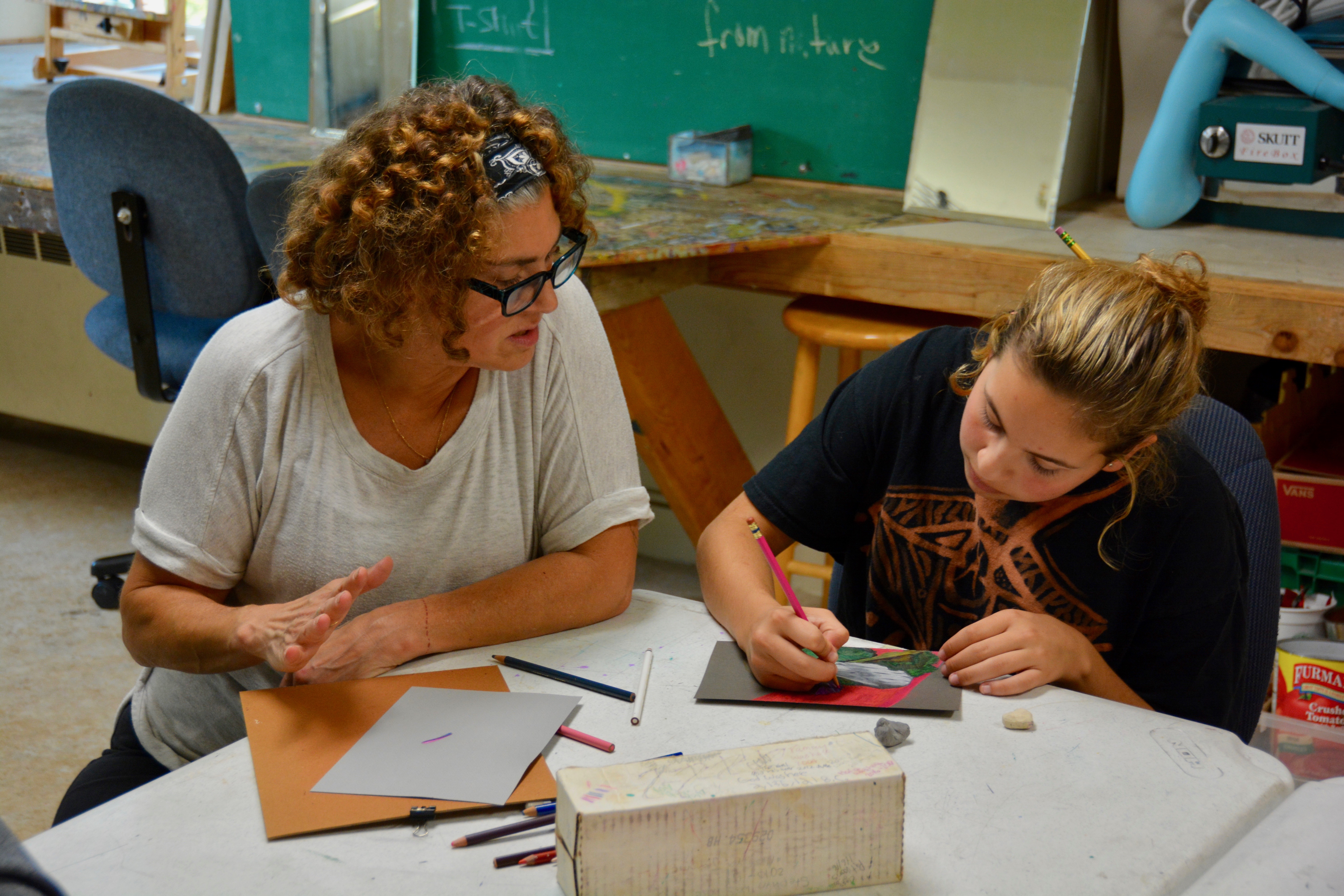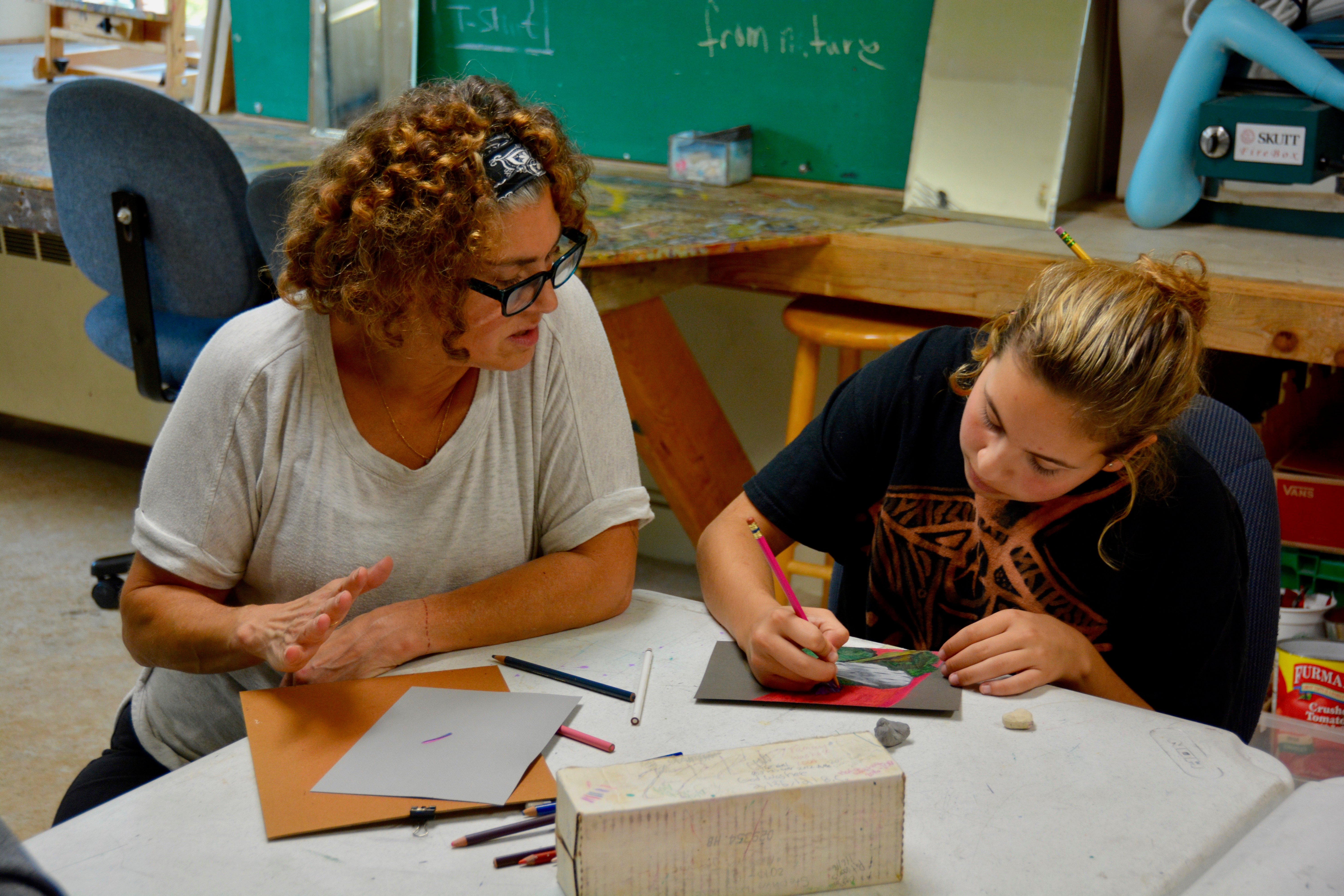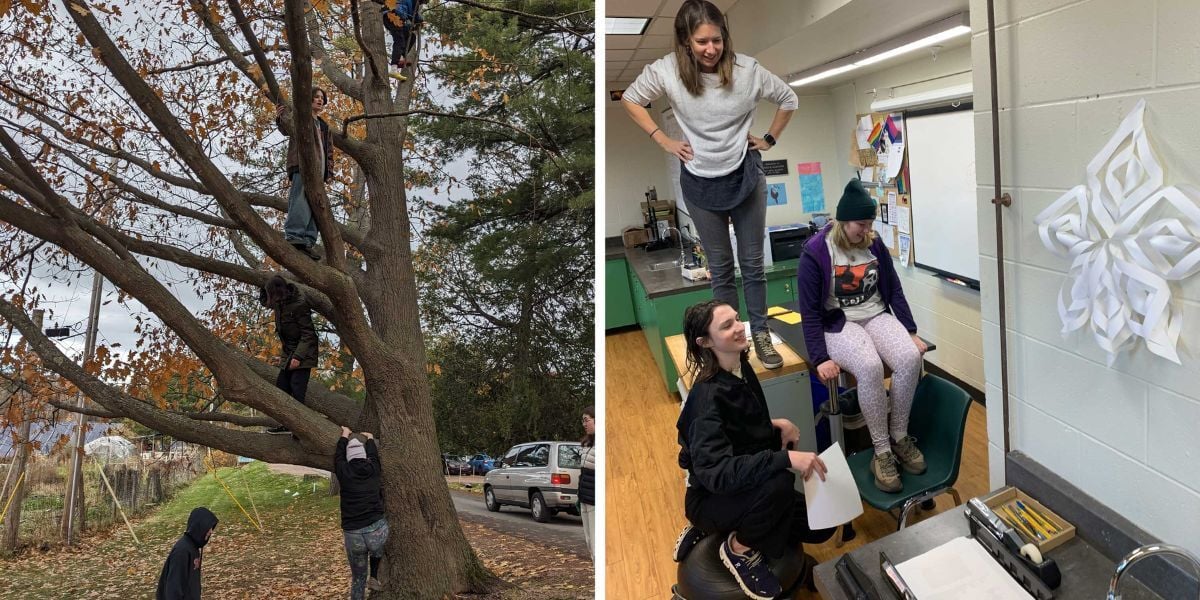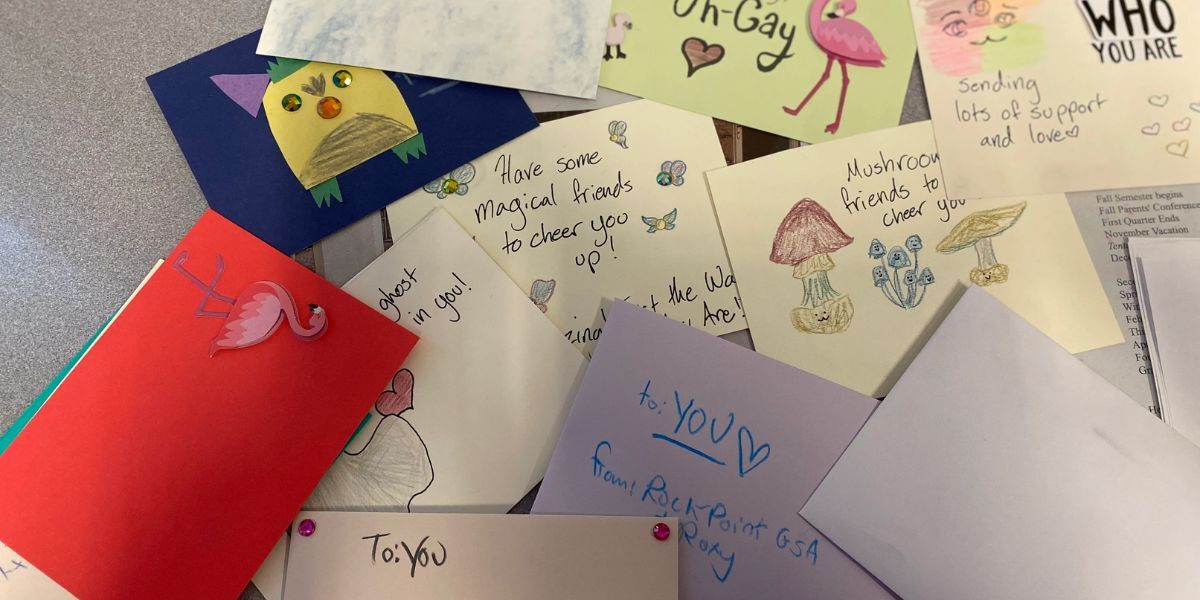Supporting Your Teen During School Breaks
As we are heading into our vacation, I am thinking about a student at Rock Point from many years ago who really struggled to get back into the school...


As students get to high school, many are forced to make the choice to give up taking an art class in order to make room in their schedule for other academic classes seen as more essential for college or careers. While it’s true that high school students should not be expected to overfill their schedules, the value of studying and creating art translates not only into the workplace, but also into emotional and social health. This is one of the reasons that at Rock Point School, we continue to put the arts at the center of our curriculum. Whether students are collaborating on a mosaic or doing a photoshoot in the woods, the skills they gain in the process are essential to becoming successful in school and beyond.
In a previous blog post on nurturing grit, we discussed why social-emotional skills, sometimes called soft skills, are becoming more and more important to employers. Recently, Google re-examined its hiring priorities based on hiring, firing, and promotion data they analyzed from 1998-2013. The company realized that its most successful employees were not necessarily those with the highest GPA in computer science. It turned out the seven top characteristics of success at Google are all soft skills:
Looking at this list, Google executives started recruiting artists and humanities majors because they were more likely to possess these skills!
Students in art class are frequently asked to solve problems creatively in their projects, both individually and as a team. Art classes are designed to help students make connections across complex ideas and communicate those ideas in many different ways. On a given day in the art room, you can find students making a self-portrait, creating a mixed media piece commenting on current events, or making a mosaic highlighting recycled materials. One senior, Calvin, said art is valuable to him because “So much of school is about not having freedom, but art is the expression of oneself and once you know the basic artistic concepts you can take it anywhere.” For Calvin, art gives him the opportunity to explore his own ideas.
For many people, giving voice to a personal problem or complex feeling can be challenging. Through art, people can communicate their feelings or communicate complex intangibles. Skilled teachers can use a student’s drawing as a jumping off point to help them make sense of their emotions. When I asked Jeff, a sophomore, what he liked about art, he said, “Art is a good stress reliever for me. I’m calmer when I’m making art. I express my feelings through creativity.”
Especially for adolescents, the questions of “Who am I?” and “Where do I belong?” become central to their learning. It is critical for schools to offer guided opportunities for students to become more self aware and, as a result, gain empathy for and understanding of others. In art classes, students can explore their identity in a safe and welcoming environment, where creativity and experiments are encouraged. Creating art can help students process and restore memories and put into perspective what is important to them.
A recent study in the UK found that 66% of physicians agree that public engagement with the arts can prevent ill health. The study found that many doctors also believe that arts-based interventions could prove to be a cost effective way to improve health outcomes. As a result physicians in the UK may be moving toward “prescribing” participating in art-based activities.
Creating art can give people a sense of accomplishment that they might be struggling to find in other aspects of their lives. For many of our students, some traditionally structured academic classes have been a source of frustration for them. Art classes give them a place where they can create something of their own and feel successful. One student, Alison, said, “My whole life I’ve struggled with everything, but art is one of the few things I have felt like I was capable of. It’s a huge self-esteem booster to finish a piece.”
With college requirements and varied interests, many high school students may not be able to take classes in the arts all four years, but finding ways to incorporate the skills students build in the art room in other areas of the curriculum has value too. Giving students the option to create a piece of art as part of a science project, using fractals to make a group art project in math, and offering chances to explore creativity in all classes can help students build their self-confidence and grow as critical thinkers.

As we are heading into our vacation, I am thinking about a student at Rock Point from many years ago who really struggled to get back into the school...

Every quarter, students choose from several electives, which meet three times a week to supplement the curriculum and provide a fun way to start...

“May your choices reflect your hopes, not your fears.” - Nelson Mandela